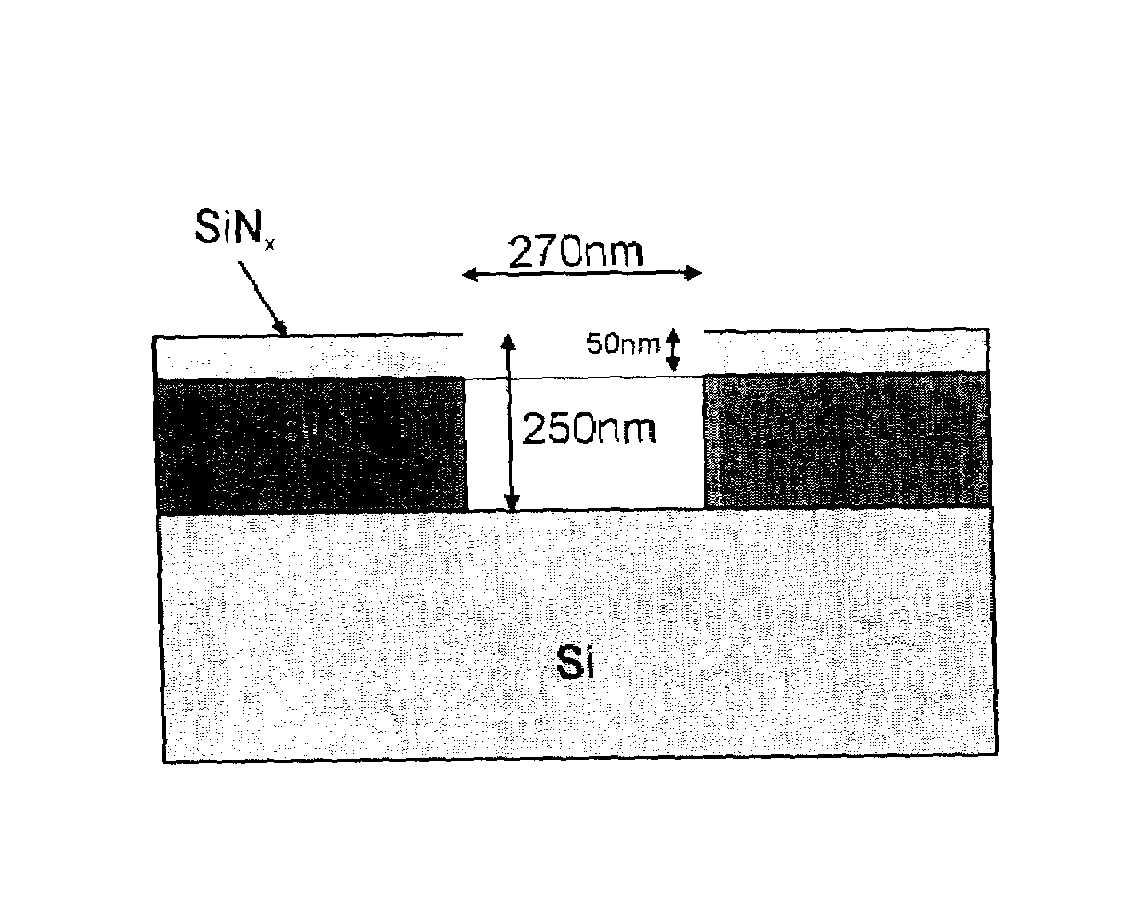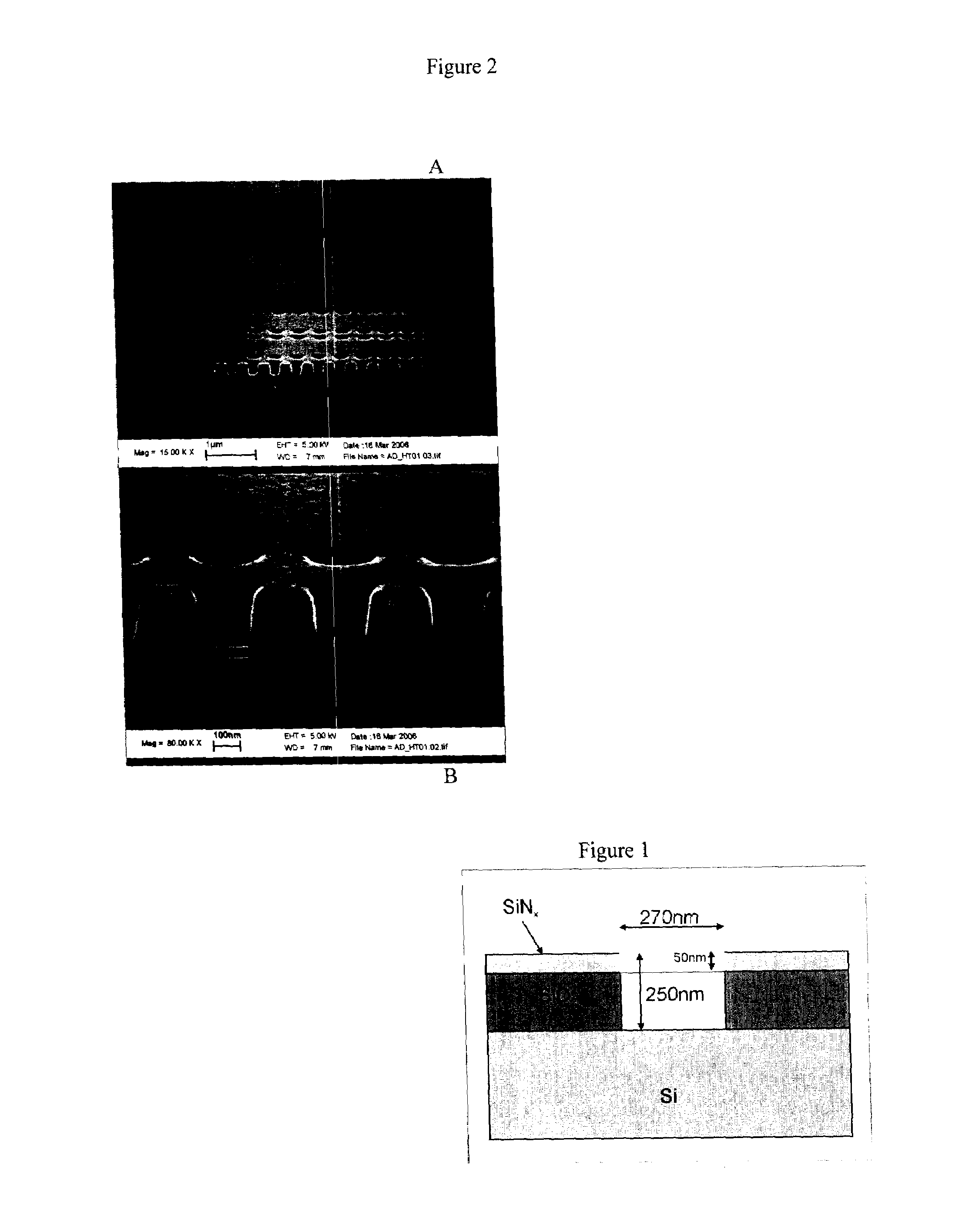Method for filling holes with metal chalcogenide material
a technology of metal chalcogenide and filling holes, which is applied in the field of filling holes with metal chalcogenide materials, can solve the problems of inflexibility of material optimization, inability to meet the requirements of power budget, and inability to achieve the effect of reducing complexity, reducing cost and improving throughpu
- Summary
- Abstract
- Description
- Claims
- Application Information
AI Technical Summary
Benefits of technology
Problems solved by technology
Method used
Image
Examples
example 1
In2Te3
[0054]The solution used for spin-coating is prepared by stirring at room temperature (in an inert atmosphere) 0.5 mmol of elemental indium (57.4 mg) and 0.75 mmol of tellurium (95.7 mg) in 3 mL of distilled hydrazine. After stirring for approximately 1 week, only a small amount of the indium remains undissolved and an orange-yellow solution is formed. The solution is filtered to remove the remaining metal and is then ready for spin coating.
[0055]Two types of substrates are employed to test surface feature filling. In substrate A, the surface of the substrate is covered with holes that have an approximately 1:1 aspect ratio as shown in FIG. 1. In substrate B, the surface is covered with similar holes and channels, but rather provides a more abrupt aspect ratio of approximately 3.5:1. In each case, the substrates are cleaned by sonicating alternately in ethanol, dichloromethane and ethanol and are finally subjected to a 15 minute dip in a solution consisting of approximately a ...
example 2
[0059]To demonstrate thicker coatings, it was necessary to apply several coatings of the indium telluride film. In FIG. 3, a substrate with three iterations of the film coating process described above is shown. Note the more complete hole filling by the indium telluride material. Attempts to produce thick films by using a much more concentrated solution or by using a slower spin speed (or by drop casting instead of spin coating) generally yielded films that exhibited a substantial amount of porosity, as a result of the need to remove gaseous products during the decomposition process. Therefore, the multiple deposition process is preferable for achieving a thick coating.
example 3
[0060]To illustrate the filling of larger aspect ratio features using the hydrazine-based solution approach, type B substrates (with approximately 3.5:1 aspect ratio features) were similarly processed and yielded the results shown in FIG. 4. Note that the holes and channels are adequately filled by the spin-coating process.
PUM
 Login to View More
Login to View More Abstract
Description
Claims
Application Information
 Login to View More
Login to View More - R&D
- Intellectual Property
- Life Sciences
- Materials
- Tech Scout
- Unparalleled Data Quality
- Higher Quality Content
- 60% Fewer Hallucinations
Browse by: Latest US Patents, China's latest patents, Technical Efficacy Thesaurus, Application Domain, Technology Topic, Popular Technical Reports.
© 2025 PatSnap. All rights reserved.Legal|Privacy policy|Modern Slavery Act Transparency Statement|Sitemap|About US| Contact US: help@patsnap.com



